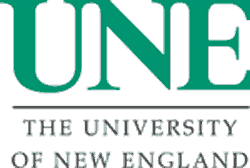Posted on October 28, 2009 by Michael Korcuska
Today the impressive slate of candidates for the Sakai Foundation Board were announced. You can find the candidate profiles and platform statements on the Sakai website.
This year four new Board Members will be elected from the group of 13 candidates. Voting occurs by Sakai Foundation member representatives from October 31 – November 13 and we will announce the new members soon after that. The newly elected members will start their terms with the first Board meeting of the new year and their terms last 3 years.
It’s a great slate and makes me wish we could have more board members! Congratulations to all the candidates for their nomination and a big “thank you” to them for their willingness to serve.
If you’re reading this and your organization is a Sakai Foundation member please encourage your member representative to vote. If you aren’t sure who that is, feel free to contact Mary Miles.
Filed under: e-learning, Sakai | Tagged: Sakai | 1 Comment »
Posted on October 21, 2009 by Michael Korcuska
For the third year running the Sakai Foundation will be co-sponsoring a reception at the Educause Annual Conference. If you’ll be at Educause this year I hope you’ll be able to join us. The other sponsors are DuraSpace, Jasig and Kuali. This has been a fun event that serves a few different purposes:
- To say “Thank You” to those who have been supporting and participating in these projects
- To welcome those who are just joining one or more of the communities
- To entice and educate those thinking about participating in one of the projects
- To strengthen ties between the communities
- To enjoy some tasty food and beverages!
The event is Wednesday evening, November 4th at 6:15 PM in Capitol Ballroom 4 at the Hyatt Regency in Denver. The event is open to all but we do ask that you RSVP at the event website. And please feel free to invite any colleagues you think would enjoy the event….
Filed under: e-portfolio | Tagged: educause09, Sakai | Leave a comment »
Posted on October 20, 2009 by Michael Korcuska

A couple of tweets in the last few days mentioned blog posts about the University of Florida and Sakai. So I thought it was worth mentioning pointing to them here. First, Sakai Foundation Product Manager Clay Fenlason made the drive from Georgia Tech to visit the Sakai team at UF and wrote about it on his blog. He mentions the infamous disaster preparedness plan that included a zombie attack scenario. I really appreciate that kind of irreverent humor and hope that the UF team will bring that creative spirit to the Sakai community. Although maybe not on the official website…
The second tweet from Mathieu Plourde pointed to Doug Johnson’s UF blog post announcing the selection of Sakai. A brief excerpt:
Ultimately, [the committee] decided that the power and flexibility of Sakai, coupled with the advantages of the open source model and the Sakai community, best met the needs of UF as envisioned in our strategic academic and IT plans.
A big welcome to the University of Florida!
Filed under: e-learning, Sakai | Tagged: Sakai, uflorida | 1 Comment »
Posted on October 19, 2009 by Michael Korcuska
I’m happy to announce the release of Sakai 2.6.1. This maintenance release provides a set of bug fixes, language/locale updates and performance enhancements that improve upon the Sakai 2.6.0 release. Over 200 issues have been addressed by 2.6.1. Roughly half involve bug fixes while the remainder involve textual updates to language translation property bundles. In particular, important fixes have been applied to the Assignment, Chat, Portfolio, Tests & Quizzes and Site-manage tools while updates for Catalan, French, Russian, Spanish and Swedish translations have also been provided.
Sakai 2.6.1 utilizes core service updates provided in the recent Sakai kernel (K1) 1.0.12 maintenance release. Portfolio users will appreciate a performance enhancement made to the kernel’s Content Hosting Service that reduces portfolio assembly times. You can see a list of all Kernel changes included in this release on the Sakai bug tracking system.
For access to the source code and documentation, please see the Sakai 2.6.1 release page.
Filed under: Sakai | Leave a comment »
Posted on October 15, 2009 by Michael Korcuska
Josh Baron has a Sakai-related article in Campus Technology. It is based on the chapter he authored for the Sakai Book. It’s a nice piece about the Teaching with Sakai Innovation Award. Here’s an excerpt I particularly liked:
With hundreds of institutions, thousands of instructors and millions of students having now used Sakai, we have an endless number of examples of how this collaborative learning environment is being deployed in education today. Although few instructors are likely using Sakai to inflict physical pain on their students, the instructional approaches taken vary enormously; from traditional (e.g. posting lecture slides online) to extremely inventive (e.g. real world simulations). Looking across this continuum of instructional applications, it is evident that those on the “inventive” end exhibit the potential Sakai holds to transform the traditional educational experience into something more engaging, rich and meaningful for the learner.
You should definitely check out the article. Or, better yet, buy the book!
Filed under: Sakai | Leave a comment »
Posted on October 15, 2009 by Michael Korcuska
As part of my recent trip to Amsterdam to present at the OpenIC symposium, I also spent some time with the good people of UvA and Edia (a small company that provides Sakai services). I learned a great deal about what they’ve been up to, which was more extensive than I expected. Sakai has really become an integral part of life at UvA and Edia has done some very nice development work.
UvA Sakai Activities (courtesy of Frank Benneker)
- UvA uses Sakai for something it calls webklas. These are three or four week distance eduction courses for prospective students who are interested in studying at the UvA. A webklas is based on a specific template with its own look and feel and selection of tools. This is an interesting example of open education that serves a strong need for UvA–ensuring students are applying to the correct program at the University.
- Portfolios -UvA is also experimenting with OSP, Sakai’s portfolio tool set. They’ll be getting some consulting help from Janice Smith at Three Canoes. As you probably know, making portfolios successful involves far more than usable software and a willing faculty member. It typically depends in curriculum reform at a higher level and a group of dedicated faculty, students and support staff. It will be interesting to watch the portfolio work at UvA as it matures.
- The UvA Communities E-Collaboration site hosts a number of interesting projects. One of these is Proeve, an internal project group for collaboration and knowledge management. Another (in English!) is Conflictstudies — a collaboration and knowledge site. This platform serves several courses on conflict studies and a growing community of scholars in this field. It makes it possible for participants in different courses to participate in discussions, make their work accessible to others and build on each other’s results in future courses.
- There are also a couple of interesting E-Research projects. Testweeklab is research environment for research on psychology data sets. A special tool has been developed to connect a Sakai site with a Fedora repository to store, manage and publish complex data sets. And specialised workflow to manage access to the data set is part of the tool. Continue reading →
Filed under: e-learning, Sakai | Tagged: amsterdam, e-collaboration, e-learning, e-research, Sakai, uva | Leave a comment »
Posted on October 13, 2009 by Michael Korcuska
Don’t forget that October 16th is the deadline for submitting your nominations for Sakai Foundation Board Members. Four (4) seats are opening at the end of this year. Elected Board Members will serve a three year term, with the possibility of being re-elected for a second three-year term. For more information on the Sakai Foundation Board and the elections of Board members, please see the Sakai Bylaws. A list of current Board members may be found on the Sakai website. Any can nominate and anyone can be nominated.
To make a nomination please send Mary Miles (mmiles@umich.edu) an e-mail with the contact information of the nominee(s): name, title, phone number and email address. The deadline for making a nomination is October 16, 2009 (did I mention that already?).
Once nominations are accepted and individuals have been contacted to determine their willingness to serve, a list of candidates will be published and elections will be held with only the designated voting representative from each Sakai Organization casting votes for these seats. We expect to have the entire process completed in November and the new Board members will be seated officially on January 1, 2010.
If you have any questions, please don’t hesitate to contact me or Mary.
Filed under: Sakai | Leave a comment »
Posted on October 13, 2009 by Michael Korcuska

Photo CC-BYNCSA by MorBCN
I spent part of last week in Amsterdam at the invitation of University of Amsterdam for the OpenIC Symposium (program in Dutch, running on Sakai). I learned a lot about what’s happening at UvA (great things!), visited Edia, a consulting company that provides Sakai services, and the Vrije Universiteit. I even gave a lecture on Open Source governance to a class of Masters students who are learning about OS technology (also at UvA). This post is about the symposium itself. Later this week I’ll blog about the other things I learned…. Continue reading →
Filed under: e-learning, Sakai | Tagged: amsterdam, open source, Sakai | 2 Comments »
Posted on October 2, 2009 by Michael Korcuska
 After the fantastic week in Bathurst at Charles Sturt University and AuSakai 09 I spent a fun weekend in Sydney with Clay Fenlason. He and I hung out with my friend Mike Erlin, a former colleague at DigitalThink who went to Australia (with his Australian wife) to work for WebCT. He now is CEO of an e-learning company in Sydney called Workstar and he and his family were very nice to host us for a day at the beach and then an early dinner at their place near Yowie Bay (some photos on Facebook and Flickr). On Monday morning I headed up to The University of New England in Australia, where I had been invited to give two talks, the first on Sakai 2.6 to their VLE selection committee and the second, organized by the new DEHub Distance Education innovation center, on Open Education. Unfortunately the first talk never happened. Continue reading →
After the fantastic week in Bathurst at Charles Sturt University and AuSakai 09 I spent a fun weekend in Sydney with Clay Fenlason. He and I hung out with my friend Mike Erlin, a former colleague at DigitalThink who went to Australia (with his Australian wife) to work for WebCT. He now is CEO of an e-learning company in Sydney called Workstar and he and his family were very nice to host us for a day at the beach and then an early dinner at their place near Yowie Bay (some photos on Facebook and Flickr). On Monday morning I headed up to The University of New England in Australia, where I had been invited to give two talks, the first on Sakai 2.6 to their VLE selection committee and the second, organized by the new DEHub Distance Education innovation center, on Open Education. Unfortunately the first talk never happened. Continue reading →
Filed under: Sakai | Tagged: armidale, ausakai09, Sakai, une | Leave a comment »





